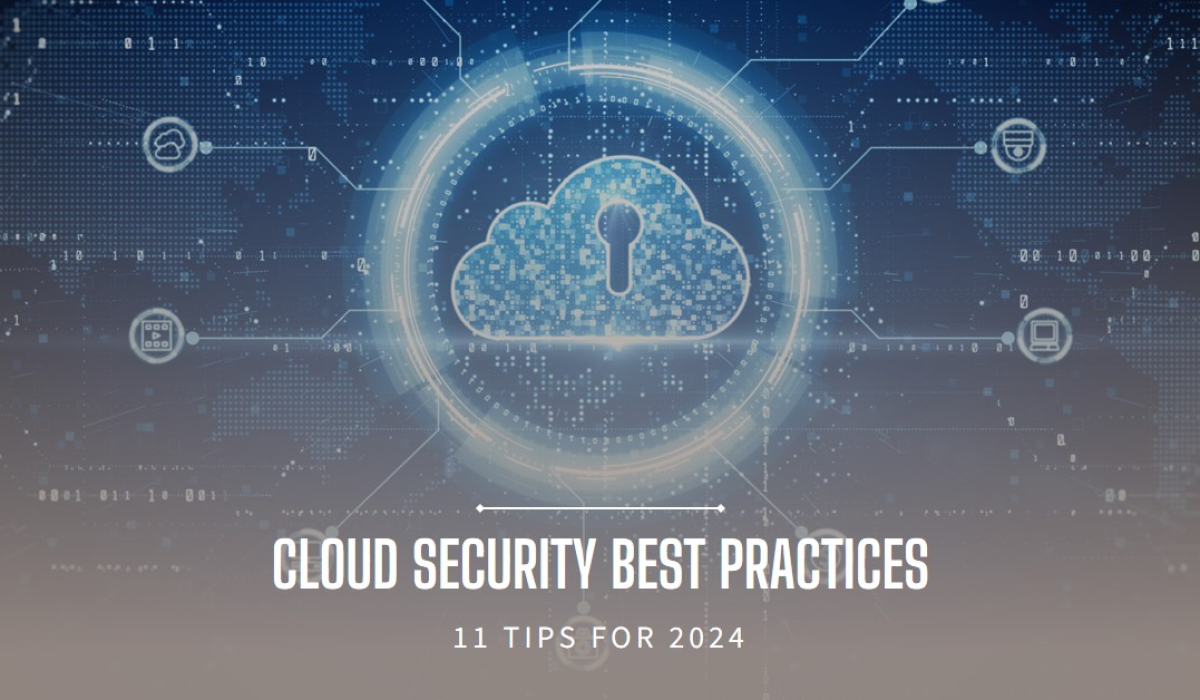
1. Understand Your Shared Responsibility Model
The cloud security landscape is a collaborative effort. It’s crucial to clearly define where the responsibility for security lies between your organization and your cloud provider. This concept is known as the Shared Responsibility Model.
By understanding the model, you can:
- Focus your efforts: Allocate resources effectively by knowing which security aspects your cloud provider handles and which ones fall under your purview.
- Avoid security gaps: Ensure there are no areas left unaddressed by mistakenly assuming the cloud provider handles everything.
- Negotiate service agreements: Use the shared responsibility model as a framework to discuss security features and controls included in your cloud service agreement.
2. Define Roles Clearly
Effective cloud security hinges on establishing clear roles and responsibilities within your organization. This includes:
- Security team: Assign ownership of cloud security tasks and ensure the team has the necessary authority and resources.
- IT department: Clearly define IT’s role in managing and securing cloud resources.
- End-users: Educate and empower users on cloud security best practices, such as strong passwords and reporting suspicious activity.
By establishing clear roles, you create a culture of accountability and ensure everyone is working together to maintain a secure cloud environment
Detailed Security Questions for Your Cloud Provider:
Data Location and Security:
- Geographical location of provider’s data centers: Where is my data physically stored?
- Security incident protocols: What happens in the event of a security breach? How will I be notified?
- Disaster recovery plans: Does the provider have a documented disaster recovery plan? How quickly can they restore data and services in case of an outage?
Access Controls and User Authentication:
- Access protection measures: How is access to my cloud environment controlled? What methods are used to prevent unauthorized access?
- Technical support levels: What level of access does technical support have to my data? Are there clear protocols in place to ensure secure access?
- Recent penetration test results: Does the provider conduct regular penetration testing? Can they share any relevant summaries (without compromising sensitive information)?
Data Encryption and Compliance:
- Encryption practices: What encryption standards are used for data at rest and in transit? Do you offer customer-managed encryption keys?
- Provider access roles: Who within the provider organization has access to my data, and for what purpose?
- Authentication methods: What multi-factor authentication (MFA) options are available for user access?
- Compliance adherence: Does the provider comply with relevant industry regulations (e.g., HIPAA, PCI DSS) that apply to your data?
Train Your Staff: Building a Cloud-Savvy and Security-Conscious Workforce
Equipping your employees with the knowledge and mindset to navigate the cloud securely is paramount. Here’s a two-pronged approach to achieve this:
1. Educate Employees on Cloud Security Best Practices:
- Develop Cloud Security Training Programs:
- Design engaging and informative training programs tailored to different roles and departments.
- Cover core topics like password hygiene, identifying phishing attempts, data security in the cloud, and reporting suspicious activity.
- Consider interactive modules, simulations (e.g., simulated phishing attacks), and gamification elements to make learning engaging.
- Regular Training & Updates:
- Schedule regular training sessions to keep employees updated on evolving threats and best practices.
- Utilize short, focused modules or microlearning to ensure efficient knowledge retention.
- Share industry news and real-world examples of cloud security breaches to emphasize the importance of vigilance.
2. Foster a Security-Conscious Culture:
- Open Communication & Reporting:
- Encourage a culture of open communication where employees feel comfortable reporting suspicious activity or security concerns without fear of repercussions.
- Establish clear reporting channels and procedures for addressing security incidents.
- Leadership Commitment:
- Demonstrate leadership commitment to cloud security by integrating it into company policies, procedures, and performance evaluations.
- Lead by example by practicing good security habits yourself.
- Positive Reinforcement & Recognition:
- Recognize and reward employees who exemplify a security-conscious mindset. This could include public recognition, bonuses, or additional training opportunities.
- Continuous Improvement:
- Regularly assess the effectiveness of your security awareness programs.
- Gather feedback from employees and adapt your training and communication strategies based on their needs.
- Stay updated on emerging cloud security threats and adapt your training content accordingly.
Establish & Enforce Cloud Security Policies: Building a Secure Cloud Foundation
Having a well-defined set of cloud security policies is crucial for protecting your data and maintaining a secure cloud environment. Here’s how to establish and enforce effective policies:
1. Create Comprehensive Cloud Security Policies:
- Data Handling:
- Define what types of data can be stored in the cloud.
- Establish clear guidelines for data classification, labeling, and access controls.
- Outline procedures for secure data transfer and disposal.
- Access Control:
- Implement the principle of least privilege, granting users only the minimum access level required for their job functions.
- Require strong passwords and multi-factor authentication (MFA) for all cloud accounts.
- Define user activity monitoring procedures to detect suspicious behavior.
- Incident Response:
- Develop a detailed incident response plan outlining steps to take in case of a security breach.
- Assign clear roles and responsibilities for incident response activities.
- Establish communication protocols for notifying stakeholders and mitigating damage.
2. Regular Review and Enforcement:
- Schedule periodic reviews of your cloud security policies to ensure they remain relevant and aligned with evolving threats and regulations.
- Conduct security awareness training to educate employees on the policies and their importance.
- Implement technical controls such as access management tools and data encryption to enforce policy compliance.
- Monitor user activity and investigate any potential policy violations.
- Take disciplinary action when necessary to address non-compliance.
Encrypt Data in Motion & at Rest: Safeguarding Your Data Throughout its Journey
Encryption is a critical tool for protecting data confidentiality in the cloud. Here’s how to ensure your data is encrypted throughout its lifecycle:
1. Encryption in Motion:
- Secure Communication Protocols: Enforce the use of secure communication protocols like HTTPS/TLS when transferring data between your on-premise environment and the cloud provider. These protocols encrypt data in transit, making it unreadable to anyone who might intercept it.
- VPN Tunnels: Consider using Virtual Private Network (VPN) tunnels to create a secure encrypted connection for data transmission, especially when dealing with highly sensitive information.
2. Encryption at Rest:
- Cloud Provider Encryption: Most reputable cloud providers offer encryption for data at rest within their storage infrastructure. Understand the encryption options available from your provider and choose a solution that meets your security requirements.
- Customer-Managed Encryption Keys: For an extra layer of control, consider using customer-managed encryption keys. This allows you to maintain control over the keys used to encrypt and decrypt your data, providing additional assurance that only authorized personnel can access your information.
3. Encryption Best Practices:
- Key Management: Implement strong key management practices to ensure the security of your encryption keys. This includes proper key rotation, secure storage, and access controls.
- Data Classification: Classify your data based on its sensitivity and apply encryption controls accordingly. More sensitive data might require stronger encryption algorithms or additional layers of protection.
- Regular Testing: Regularly test your encryption solutions to ensure they are functioning properly and effectively safeguarding your data.
Integrate Additional Cloud Security Tools: Bolstering Your Cloud Defenses
While strong security practices are essential, leveraging additional cloud security tools can significantly enhance your cloud environment’s overall protection. Here’s a look at some valuable tools and how they can benefit you:
1. Intrusion Detection and Prevention Systems (IDS/IPS):
- Intrusion Detection Systems (IDS): Continuously monitor network traffic for suspicious activity that might indicate a potential attack. An IDS can alert you to such activity allowing for investigation and mitigation.
- Intrusion Prevention Systems (IPS): Go a step further by not only detecting but also actively preventing intrusions. IPS can block malicious traffic or take other actions to stop an attack in its tracks.
2. Cloud Access Security Brokers (CASBs):
CASBs act as security gateways that sit between your organization and various cloud services you use. They offer a range of benefits:
- Centralized Visibility and Control: Gain a consolidated view of all your cloud activity across different cloud providers, allowing for centralized policy enforcement and access management.
- Data Loss Prevention (DLP): Prevent sensitive data from being accidentally or intentionally leaked out of your cloud environment.
- Threat Detection and Compliance: CASBs can monitor cloud activity for suspicious behavior and help ensure adherence to relevant data security regulations.
3. Exploring Additional Solutions:
The cloud security landscape offers a vast array of specialized tools that can address specific needs. Consider exploring options like:
- Cloud Workload Protection Platforms (CWPP): Protect workloads running in the cloud from malware, vulnerabilities, and other threats.
- Cloud Security Posture Management (CSPM): Continuously monitor your cloud environment for misconfigurations and security weaknesses.
- Cloud-based Security Information and Event Management (SIEM): Collect and analyze security data from various cloud sources to identify and respond to potential threats.
Choosing the Right Tools:
Selecting the most suitable tools depends on your specific cloud environment, security requirements, and budget. Conduct a thorough assessment of your needs and research available solutions before integrating them into your security posture.
Double-Check Your Compliance Requirements: Staying on the Right Side of Regulations
1. Identify Applicable Regulations:
- Industry Standards: Depending on your industry, specific regulations might govern data security and privacy. Common examples include HIPAA (healthcare), PCI DSS (payment card data), and GDPR (EU data protection).
- Organizational Requirements: Internal regulations or compliance requirements set by your organization might also apply.
2. Understand Compliance Implications:
- Data Classification: Classify your data based on its sensitivity and the regulations that apply to it. This will help determine the level of security controls required.
- Gap Analysis: Identify any gaps between your current cloud security practices and the compliance requirements you need to meet.
3. Take Action to Address Gaps:
- Adapt Existing Controls: Review your existing cloud security policies, procedures, and tools. Modify them as needed to ensure compliance.
- Implement Additional Controls: Depending on the identified gaps, you might need to implement additional security measures like encryption solutions, access controls, or user training programs.
- Leverage Cloud Provider Compliance Resources: Many cloud providers offer resources and tools to help customers comply with relevant regulations. Utilize these resources to streamline your compliance efforts.
4. Continuous Monitoring and Improvement:
- Regular Reviews: Schedule periodic reviews of your cloud security posture and compliance status.
- Stay Updated on Regulations: Regulatory requirements can change over time. Stay informed about any updates or new regulations that might impact your compliance obligations.
- Adapt and Improve: Be prepared to adapt your cloud security practices and compliance efforts as regulations evolve and your organization’s needs change.
Conduct Pentesting, Vulnerability Scans, & Audits: Proactive Measures for a Secure Cloud
Proactive vulnerability assessments are essential for maintaining a secure cloud environment. Here’s a look at some key strategies:
1. Regular Vulnerability Scans:
- Automated Scans: Schedule automated vulnerability scans to identify potential weaknesses in your cloud configurations, systems, and applications.
- Focus on Critical Systems: Prioritize scans for systems and applications that store or process sensitive data.
- Remediation and Patching: Address identified vulnerabilities promptly by applying security patches or implementing necessary configuration changes.
2. Penetration Testing (Pen Testing):
- Simulate Real-World Attacks: Engage ethical hackers to conduct penetration tests, simulating real-world attacks to identify exploitable weaknesses in your cloud defenses.
- Internal vs. External Testing: Consider both internal and external penetration testing to assess your defenses from different perspectives.
- Improve Security Posture: Use pen test results to prioritize remediation efforts and strengthen your overall security posture.
3. Security Audits:
- Regular Security Reviews: Conduct periodic security audits to assess the effectiveness of your cloud security controls and identify areas for improvement.
- Compliance Audits: If required to comply with specific regulations, schedule regular compliance audits to ensure your cloud environment meets the necessary security standards.
- Independent Review: Consider engaging an independent security auditor for an objective assessment of your cloud security posture.
4. Enable & Monitor Security Logs:
- Centralized Logging: Set up centralized logging to capture security-related events from various sources across your cloud environment.
- Log Analysis: Implement log analysis tools to identify suspicious activity, potential security incidents, and trends that might indicate evolving threats.
- Alerting and Response: Configure automated alerts based on log analysis to notify security teams of potential issues requiring investigation and response.
Cloud Misconfigurations: A Top Threat and How to Mitigate It
Cloud misconfigurations are a major concern in cloud security, often leading to data breaches and unauthorized access. Here’s a breakdown of this critical issue and how to address it:
Why Misconfigurations Matter:
Cloud platforms offer a vast array of settings and functionalities. Accidental or unintentional misconfigurations can create security gaps that attackers can exploit. These misconfigurations can involve:
- Improper access controls: Granting overly permissive access to users or resources.
- Insecure storage configurations: Leaving data unencrypted or exposed to unauthorized access.
- Outdated software: Failing to update software with critical security patches.
The Impact of Misconfigurations:
The consequences of misconfigurations can be severe:
- Data Breaches: Exposed data due to misconfigured storage settings can lead to data breaches, compromising sensitive information.
- Unauthorized Access: Inadvertently granting excessive access privileges can allow unauthorized users to access sensitive systems or data.
- Compliance Violations: Misconfigured cloud environments might not meet industry regulations or organizational compliance requirements.
Mitigating Misconfigurations:
- Infrastructure as Code (IaC): Utilize IaC tools to automate cloud infrastructure provisioning and configuration management. This reduces the risk of manual errors and ensures consistent, secure configurations.
- Least Privilege Principle: Enforce the principle of least privilege by granting users only the minimum access level required for their roles.
- Regular Reviews and Audits: Schedule regular reviews and audits of your cloud configurations to identify and address any misconfigurations promptly.
- Utilize Cloud Provider Tools: Many cloud providers offer tools and best practices to help users configure their cloud environments securely. Leverage these resources to your advantage.
Beyond Misconfigurations: Other Major Cloud Security Issues
While misconfigurations are a significant threat, other major cloud security concerns require attention:
- Unnecessary & Unauthorized Access: Implement strong access controls to prevent unauthorized access to cloud resources and data. This includes enforcing multi-factor authentication and monitoring user activity.
- Cloud Vendor Weaknesses: While cloud providers invest heavily in security, no system is foolproof. Evaluate your cloud provider’s security posture and understand their shared responsibility model.
- Employee Errors: Even well-intentioned employees can make mistakes that compromise security. Provide ongoing security awareness training to educate employees on best practices for using cloud resources securely.
By understanding and addressing these top cloud security issues, you can significantly reduce your risk of security breaches and ensure a more secure cloud environment for your organization.





